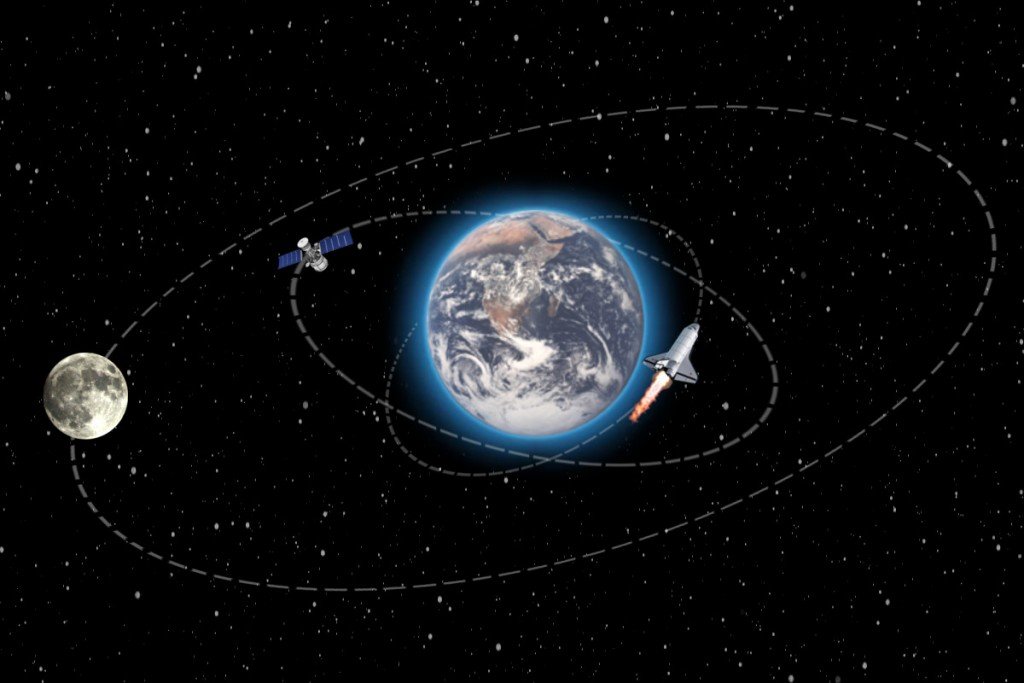
To further avoid ambiguity, the convention is to capitalize the word Moon when referring to Earth's natural satellite (a proper noun), but not when referring to other natural satellites ( common nouns). When it is necessary to avoid both the ambiguity of confusion with Earth's natural satellite the Moon and the natural satellites of the other planets on the one hand, and artificial satellites on the other, the term natural satellite (using "natural" in a sense opposed to "artificial") is used.


īecause of this shift in meaning, the term moon, which had continued to be used in a generic sense in works of popular science and in fiction, has regained respectability and is now used interchangeably with natural satellite, even in scientific articles. The terms man-made satellite and artificial moon were very quickly abandoned in favor of the simpler satellite, and as a consequence, the term has become linked primarily with artificial objects flown in space. In 1957, however, the launching of the artificial object Sputnik created a need for new terminology. The term satellite thus became the normal one for referring to an object orbiting a planet, as it avoided the ambiguity of "moon". He derived the term from the Latin word satelles, meaning "guard", "attendant", or "companion", because the satellites accompanied their primary planet in their journey through the heavens. The first to use the term satellite to describe orbiting bodies was the German astronomer Johannes Kepler in his pamphlet Narratio de Observatis a se quatuor Iouis satellitibus erronibus ("Narration About Four Satellites of Jupiter Observed") in 1610. Galileo chose to refer to his discoveries as Planetæ ("planets"), but later discoverers chose other terms to distinguish them from the objects they orbited. Until the discovery of the Galilean satellites in 1610 there was no opportunity for referring to such objects as a class. The first known natural satellite was the Moon, but it was considered a "planet" until Copernicus' introduction of De revolutionibus orbium coelestium in 1543. For the category of dwarf planets, Charon has the largest ratio, being 0.52 the diameter and 12.2% the mass of Pluto. The next largest ratios are the Neptune– Triton system at 0.055 (with a mass ratio of about 1 to 4790), the Saturn– Titan system at 0.044 (with the second mass ratio next to the Earth–Moon system, 1 to 4220), the Jupiter– Ganymede system at 0.038, and the Uranus– Titania system at 0.031. The Earth–Moon system is a unique exception in the Solar System at 3,474 kilometres (2,158 miles) across, the Moon is 0.273 times the diameter of Earth and about 1⁄ 80 of its mass. Ī planet usually has at least around 10,000 times the mass of any natural satellites that orbit it, with a correspondingly much larger diameter. As of November 2021, there are 442 other minor planets known to have natural satellites. Seven objects commonly considered dwarf planets by astronomers are also known to have natural satellites: Orcus, Pluto, Haumea, Quaoar, Makemake, Gonggong, and Eris. In the Solar System, there are six planetary satellite systems containing 284 known natural satellites altogether.

Natural satellites are colloquially referred to as moons, a derivation from the Moon of Earth. The revolution animation of Charon orbiting Pluto as a natural satelliteĪ natural satellite is, in the most common usage, an astronomical body that orbits a planet, dwarf planet, or small Solar System body (or sometimes another natural satellite).


 0 kommentar(er)
0 kommentar(er)
